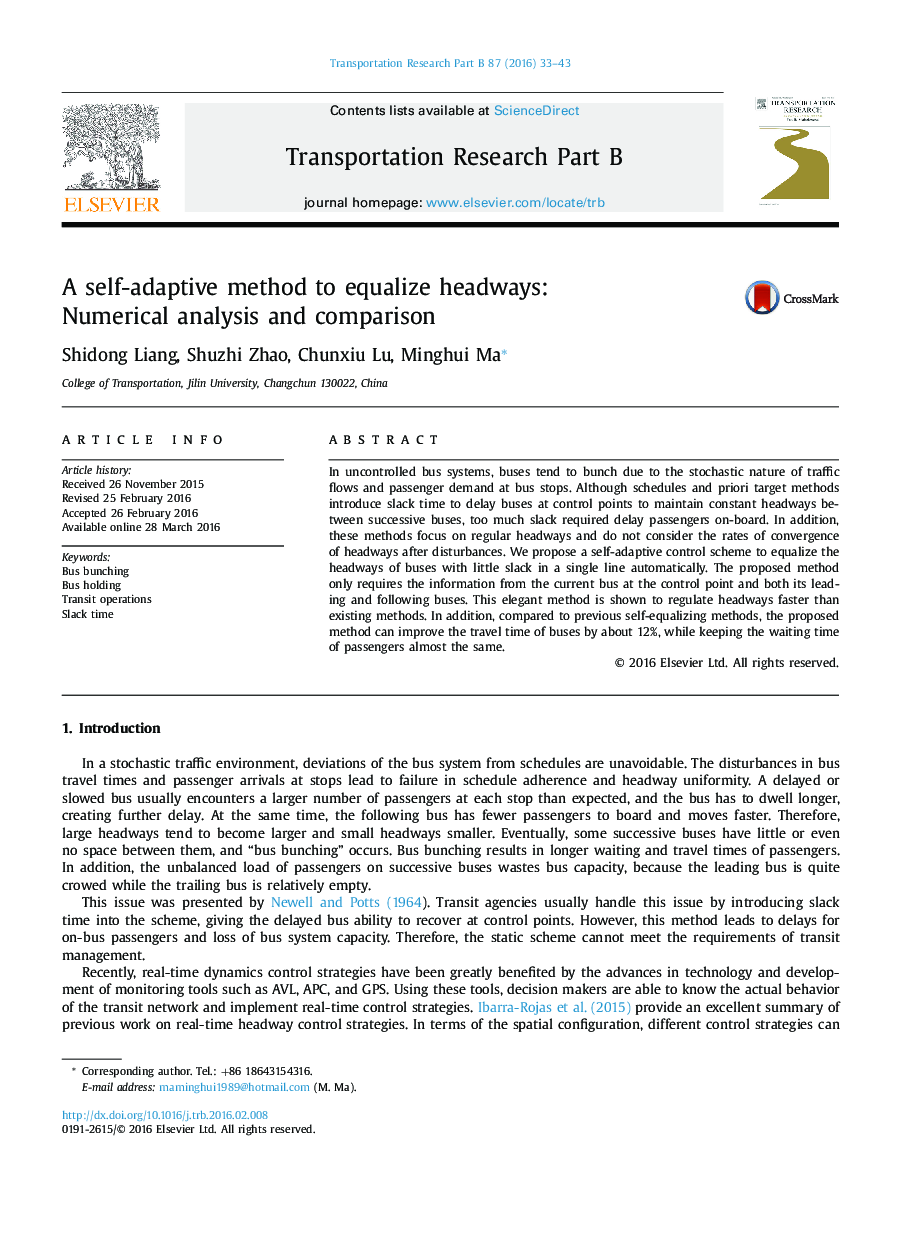| Article ID | Journal | Published Year | Pages | File Type |
|---|---|---|---|---|
| 1131587 | Transportation Research Part B: Methodological | 2016 | 11 Pages |
•Reducing unnecessary slack times to zero level, increasing operating efficiency and reducing the loss of the bus system capacity.•Evaluating the two-way-looking control algorithm in the case of zero slack using the bus holding strategy.•Improving the headways convergence rate, making headways recover rapidly after disturbance.•Extending and optimizing the self-equalizing headways method.
In uncontrolled bus systems, buses tend to bunch due to the stochastic nature of traffic flows and passenger demand at bus stops. Although schedules and priori target methods introduce slack time to delay buses at control points to maintain constant headways between successive buses, too much slack required delay passengers on-board. In addition, these methods focus on regular headways and do not consider the rates of convergence of headways after disturbances. We propose a self-adaptive control scheme to equalize the headways of buses with little slack in a single line automatically. The proposed method only requires the information from the current bus at the control point and both its leading and following buses. This elegant method is shown to regulate headways faster than existing methods. In addition, compared to previous self-equalizing methods, the proposed method can improve the travel time of buses by about 12%, while keeping the waiting time of passengers almost the same.
